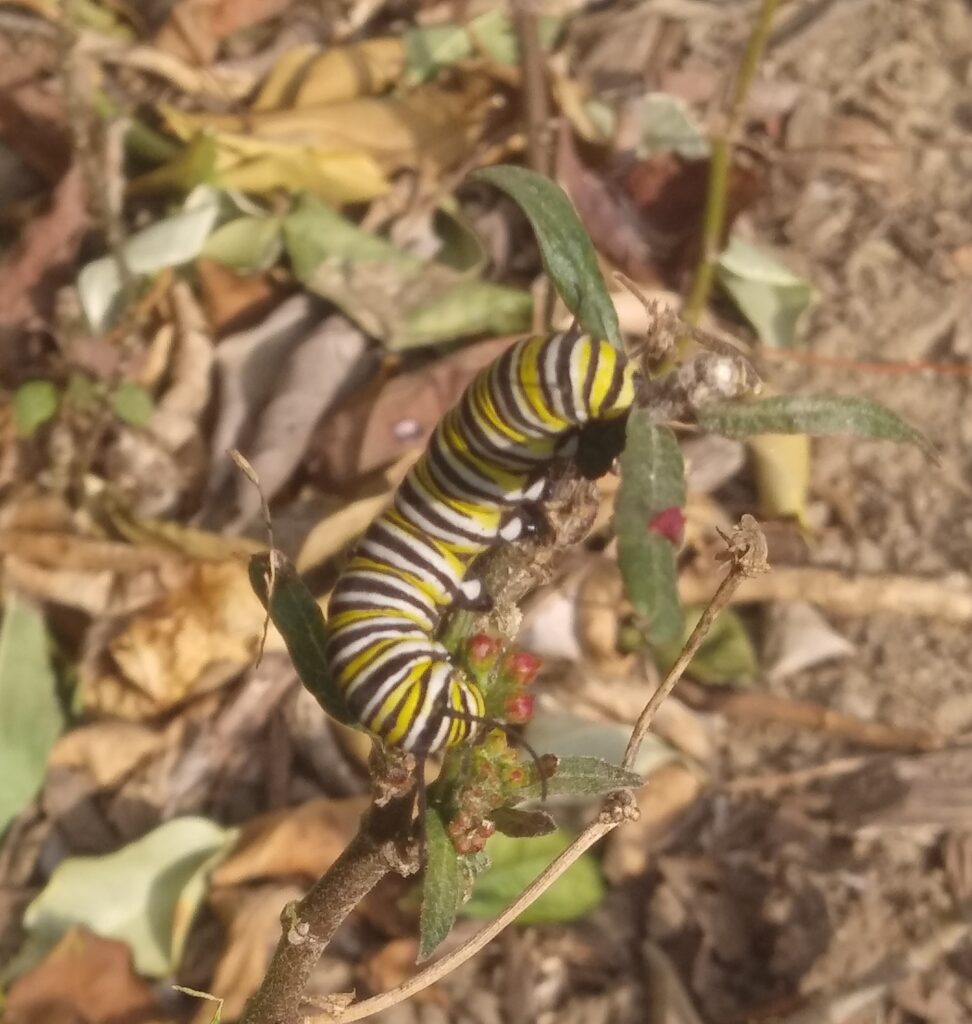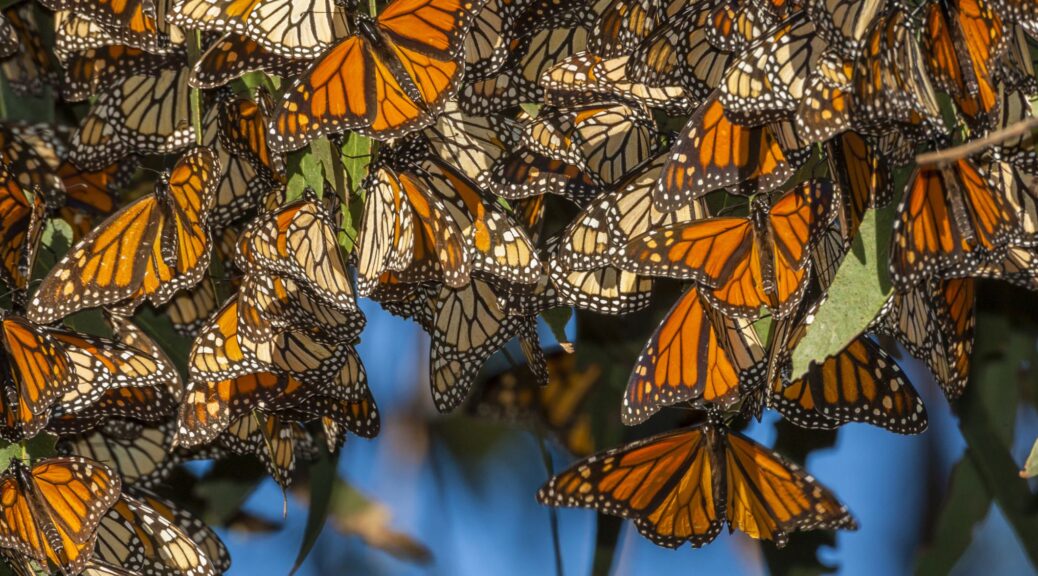Monarch butterflies used to gather in the park half a mile from where I grew up, in numbers too great to count. They hung like orange jewels from the gray-green strands of Eucalyptus leaves.
A lot of my youth took place in that park. I rode through it on my bike to and from the junior high school and, later, on my way to work at a number of those crappy jobs one gets as a teenager. I played baseball there. But for me it’s the monarchs. They gave to that place meaning.
I moved away from Ventura many years ago. The butterflies are mostly gone now. According to a recent report from the Xerces Society, an advocacy group focused on invertebrate conservation, only 1914 Monarchs were recorded overwintering on the California coast. Xerces Society volunteers canvassed 246 roosting sites from the North Coast to Baja California in the south. “This critically low number follows two years with fewer than 30,000 butterflies–the previous record lows–indicating that the western Monarch Butterfly migration is nearing collapse.” The Xerces Society has been watching this migration for decades. The most recent data show “a 99.9% fall from the numbers of monarchs in the 1980s, when butterflies filled trees from Marin County to San Diego County.”
California is changing. Every time I go back it seems drier, hotter, and more desperate. I still see the scars from the catastrophic fires that devastated the town late in 2018. It is difficult to live there unless you have money. Homelessness is rampant. RVs sit in the lots at the park, a place for those who are struggling to scrape by to set up base camp. There are costs associated with all of this. Southern California is so different from what I once knew. Maybe the butterflies are a small matter, but their decline seems emblematic of so much else. The reasons for the devastating drop in the Monarch population are easy to see and entirely avoidable: loss of overwintering, migration, and breeding habitat and the use of pesticides.
Some historians will tell you that they study the past. There is truth to that, of course. But I think it is more on the mark to say that we study change: how and why, and with what consequences.
There has been so much change over the last eleven months. Early in March of last year my mom had a serious stroke. No stroke is well-timed, but having one at the beginning of a global pandemic was particularly devastating. The stroke took place early in March. I flew out to visit. I flew back to New York on the 12th, and everything shut down the next day. After three months in a locked-down rehab facility, as the residents started to fall ill and die from Covid, we moved my mom home. The cost of 24/7 care was enormous and unsustainable, and when Covid hit both my parents late in December, brought into the house by one of the caregivers, we decided again to move my mom, this time out of the house she has called home for sixty years and into a board and care facility. My parents made it through COVID–thanks to the help of a family friend who owned a scuba shop in the harbor we were able to get my dad the oxygen he needed more quickly than the doctor could order it. And we are hopeful we have made the right move. We cannot know for sure and like so many people, we are wracked with uncertainty.
I know we have it better than many millions of people.
I think back over the past eleven months. I think of what has happened since March. George Floyd, and the Black Lives Matter protests across the country; the presidential campaign, and its strange, violent conclusion. I think of the constantly increasing death toll, and the millions of people grieving. And the assault on the Capitol building less than a month ago. These are events of significance. I do not doubt that one day students in high school and on college campuses will read about them, if we still have history classes then.
But his past year has made my world much smaller. What are the events that mattered in my own life? A stroke, fraught trips across the country in the midst of a pandemic to try to help, my own bout with the disease from which I am still recovering. And the effect of this crisis on my parents.
Within two weeks of my return to New York, we reached the painful decision to put our dog Bonehead to sleep. It caused a lot of stress and sadness, the days preceding this decision.

We adopted him from the shelter in 2010, an angry and tweaked-out stray with bug eyes, a lantern jaw, and a bad attitude. We named him Stitch, because of how he looked. Gradually he grew into his real name, because of who he was. He never took food from a plate. Sometimes he tried to be nice, and to be playful, but it was never really in him. He was afraid of fireworks and thunder until he lost his hearing. He continued to speak with the ghost of the old man who died in our house many, many years ago. And if you came up to him to say hi with your dog, he would jack you up. Whenever I left town, his anxiety kicked in and he would get the worst case of the shits. He was not a nice dog, and he was a lot of trouble. But after a year like this one, I am feeling like maybe this long 2020 finally won a round, and landed a couple of hard punches. We’re reeling.
During the week I spent in California I pushed my mom in her wheelchair through the park. I scooped up avocados that the wind had knocked down. I know cargo shorts are out of fashion, but sometimes you have to stash things, you know? Avocados, for instance, or cool rocks. I saw a few Monarchs flying around, but nothing like before. Nothing was the same. On my last day I walked out to the backyard, and checked out a few ratty looking milkweed plants. I saw one Monarch caterpillar, munching along, working his way through his cycle before one of a number of possible predators picked him off. Maybe it’s a hopeful sign.


